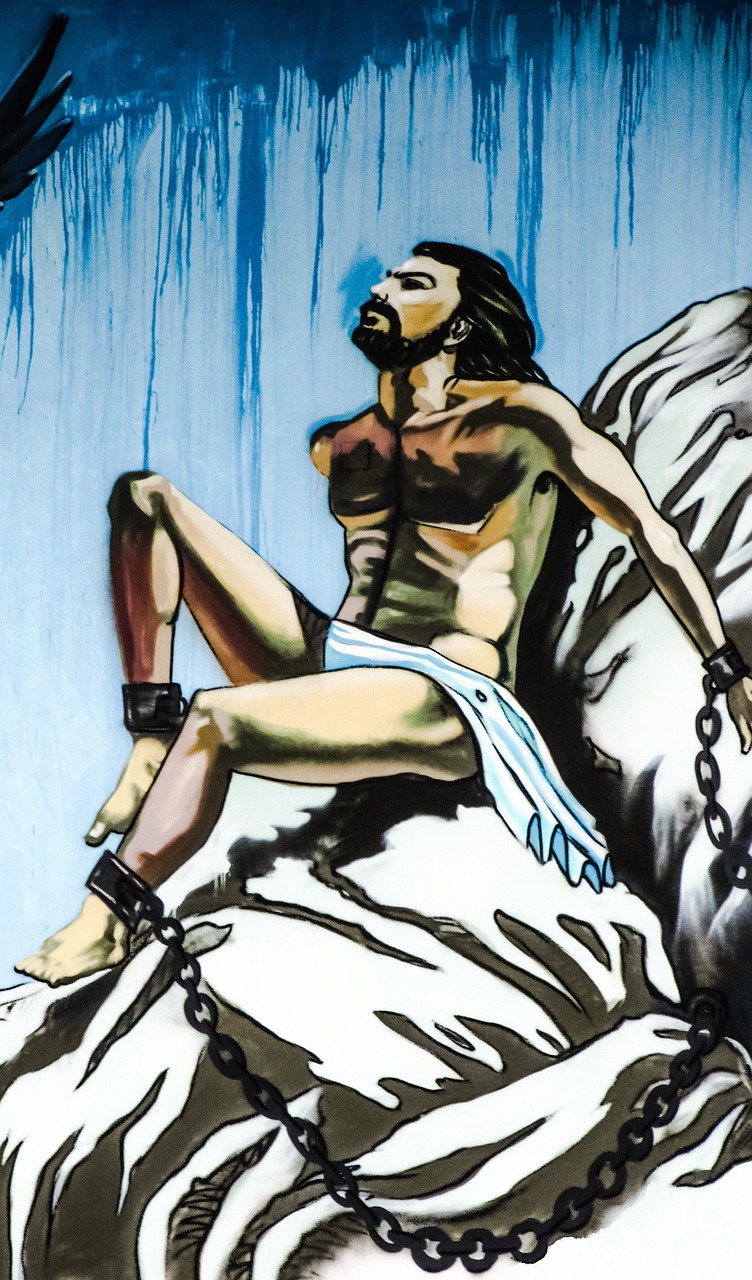In the continuation of a series exploring classical mythology through a modern lens, archaeologist and Landmarks Docent Jamie D. Aprile delves into the tale of Prometheus. For insights into how classical Greek and Roman myths have influenced contemporary art, refer to Aprile’s initial post.
Koren Der Harootian’s experiences with the harsh realities of humanity began in his childhood during the Armenian genocide of 1915. After witnessing the deaths of loved ones, he emigrated to the United States in 1921 with family members who survived. In the aftermath of World War II, Der Harootian, like many artists of his time, contemplated the startling technological advancements wrought by warfare, particularly the alarming advent of atomic power. The American public was just beginning to understand the stark divide between the hopeful visions for the future after the war and the ominous capabilities presented by atomic technology when he created his piece, Prometheus and Vulture (fig. 1) in 1948. Remaining true to his affinity for mythological themes, he invoked the figure of Prometheus as a powerful symbol during this era marked by rapid technological evolution and fear.
Ancient Greek mythology presents Prometheus as the harbinger of human ingenuity and advancement, as he bestowed essential gifts—such as culture and civilizational knowledge—upon humanity. However, his defiance against Zeus, the ruler of the gods, resulted in severe repercussions. Aeschylus’s Prometheus Bound (5th century BCE) recounts the myriad skills Prometheus imparted to humankind, including navigation, agriculture, healing, and the arts of reading and writing. Yet, the most significant gift he provided was reason, enabling humans to think critically and innovate beyond mere reactive behavior. Hesiod’s Theogony (8th century BCE) relates how Prometheus deceived Zeus by presenting a sacrifice that benefited humans, prompting Zeus to retaliate by withholding fire—a crucial resource. In turn, Prometheus daringly stole fire back for humanity from Mt. Olympus, leading to his punishment where he was bound to a mountain, continually tormented by an eagle that would consume his regenerating liver daily (fig. 2).
Figure 2, Atlas and Prometheus, 6th Century BCE. Museo Gregoriano Etrusco, Rome. ARTstor [online]. New York: New York. Available from World Wide Web: (http://www.artstor.org). Laconian kylix illustrating the punishments endured by Atlas and Prometheus, with a column symbolizing the mountain.
While Prometheus was eventually liberated by Hercules, Der Harootian chose to represent him while still enduring his suffering. The artist’s depiction shows Prometheus manacled in a constricted position, his head tilted back in anticipation of the distress about to be inflicted by the approaching bird. A careful examination reveals that Prometheus appears far from human (fig. 3); rather, his visage resembles that of a bird—sharp and beak-like, lacking clear definition between the nose and chin. Both Prometheus and the vulture share wide, unblinking eyes that convey an empty gaze (fig. 4). In a compelling artistic choice, Der Harootian replaces the sacred eagle—a symbol of divine retribution—with a vulture, associated with decay and death.
Figure 3, Detail of Prometheus and Vulture. Photo by Ben Aqua.
Figure 4, Detail of Prometheus and Vulture. Photo by Ben Aqua.
This substitution suggests a unity between humans and animals, wherein both are victims of death and devastation. Simultaneously, the punishment of Prometheus serves as a critical commentary on the peril associated with human ingenuity, especially when misconstrued as divine inspiration. As humanity adopted the god-like power of atomic energy, it mirrored Prometheus’s narrative. This leads to a profound realization: humans, while ascending to a god-like realm, still face dire consequences, resulting in continuous cycles of death. By reinterpreting the motifs of this ancient myth, Der Harootian encapsulates the intense emotions of the postwar period and calls for society to engage in self-reflection regarding the implications of innovative progress.



